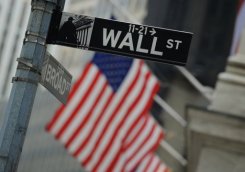 |
| The conventional wisdom on Wall Street is that Washington’s feuding politicians will still reach a last-minute deal © AFP/File Stan Honda |
NEW YORK (AFP) – US banks have begun making contingency plans for what to do if the US government defaults on its debt or loses its triple-A credit rating, banking sources and analysts said.
But the conventional wisdom on Wall Street is that Washington’s feuding politicians will still reach a last-minute deal and avert a default, an outcome that President Barack Obama has warned would be economic “Armageddon”.
“The anecdotal evidence I’ve heard is that folks are beginning to take steps in case it happens,” a former Federal Reserve official with extensive contacts in the banking industry told AFP.
Bank of America, Wells Fargo and Citigroup confirmed that they were making plans on how to minimize the damage of a government default or downgrade.
“While we have confidence our legislators will reach a resolution, our contingency planning is focused on ensuring we will able to meet our customers’ needs should an agreement not be reached,” a Wells Fargo spokeswoman said.
Bank of America said it was “working through a variety of contingency plans” while Citigroup said it had been “continuously preparing for a scenario where the US debt limit is not raised”.
None of the banks though would detail their strategies.
Obama and the US Treasury have said Congress must raise the government’s $14.29 trillion debt ceiling by August 2 to prevent a default, but Democrats and Republicans remained deadlocked Monday amid bitter disagreements over tax increases and spending cuts.
The Wall Street Journal reported last week that major US banks were spending hundreds of hours preparing contingency plans for worst-case scenarios.
Some banks have been sketching out plans to raise more and more cash as the August 2 deadline approaches to bolster liquidity in case of a crisis, said Lou Crandall, chief economist for Wrightson ICAP.
Still, US banks are so exposed to, and dependent on government debt that there is little they can do.
“Treasuries are unique,” Crandall said. “Nothing can take their place.”
For decades, US Treasury bonds were viewed as the ultimate safe-haven asset, and banks held a large part of their capital in them or other US government securities. They are also widely used as collateral in various transactions.
US banks owned $1.66 trillion in US government securities in June, the last month for which data was available, according to the Federal Reserve. By comparison, China held $1.16 trillion as of May.
In theory, banks have several options for how to hedge the value of their Treasuries.
For instance, they may buy credit-default swaps (CDS), which are essentially insurance contracts that pay out in case of a default. The CDS price for one-year Treasuries has roughly doubled since mid-May, but remains very low.
Banks could also bet on a decline in the US dollar, which is likely to drop sharply after a default or a downgrade.
“A three- to five-percent decline in the dollar might result from a technical default in terms of US Treasury debt, and that’s a contingency that I think many investors are taking into account,” Bill Gross, founder of Pimco, the world’s largest bond fund, told National Public Radio last week.
But analysts stress that a default, or even a downgrade, could cause deep damage to banks’ balance sheets, and their options for hedging against such a scenario are limited.
“What can you do about it? Not a God-damn thing!” said Dick Bove, a banking analyst with Rochdale Securities. “It would just overwhelm the American banking system, so all they can do is sit and wait.”
© AFP — Published at Activist Post with license
linkwithin_text=’Related Articles:’



Be the first to comment on "Wall Street braces for US default"